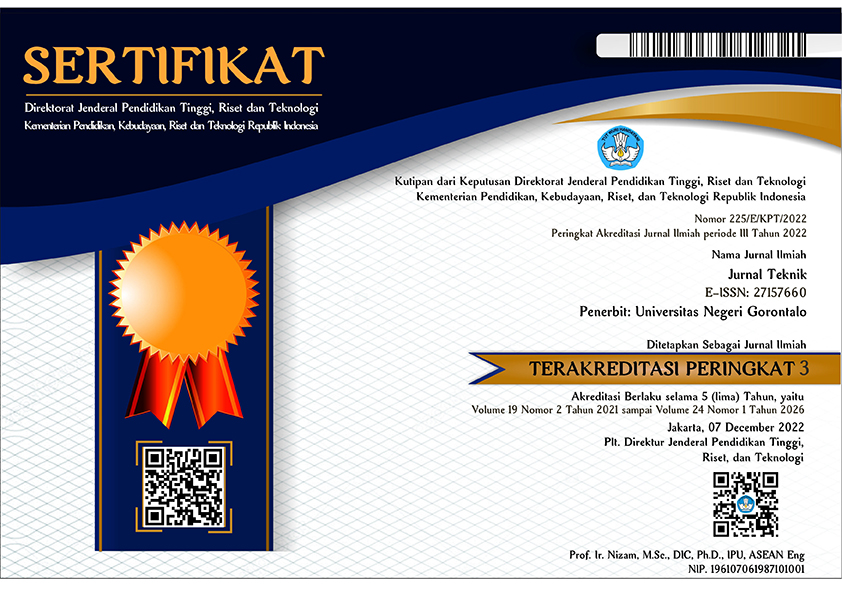Kajian Elemen Fisik Kota Palembang berdasarkan Analisis Persepsi dan Unsur Elemen Pembentuk
Abstract
An image that arises based on people's memory is influenced by the history and culture of the people in a city. Palembang is one of the historical cities in Indonesia with the oldest trading system in Indonesia since ancient times known as the Venice city of the east. The formation of the image of a city is influenced by the physical elements of urban space. However, the development of the physical elements of Palembang City has never been known. Based on that, this study aims to determine the physical elements of Palembang City through physical objects in Palembang City. The scope of discussion of this study is in the form of determining the physical elements of Palembang City through Kevin Lynch's theory and public perception. The study will be conducted using a descriptive method with an exploratory Grounded Theory qualitative approach. The sampling technique uses non-probability sampling techniques and data collection of physical objects through sociological survey methods. The study found that the most influential constituent elements are preceded by nodes, landmarks, districts, paths and edges. The forming element of Palembang City is a physical object that is high in size and can be seen by the public from all corners of the city and is the center of community activity. The elements forming this city can be a consideration in determining the image of Palembang City.
Downloads
References
Budiman, I. T. R., Rondonuwu, D. M., & Tungka, A. E. (2018). Analisis Elemen – Elemen Pembentuk Citra Kota Di Kawasan Perkotaan Tahuna, Kabupaten Kepulauan Sangihe. Spasial, 5(3), 449–460.
Corbin, J. M., & Strauss, A. (1990). Grounded Theory Research: Procedures, Canons, and Evaluative Criteria. Qualitative Sociology, 13(1), 3–21. https://doi.org/https://doi.org/10.1007/BF00988593.
Creswell, J. W. (2006). Qualitative Enquiry & Research Design, Choosing among Five Approaches (2nd ed.). Sage Publication Inc.
Fahri, M., & Harsritanto, B. I. R. (2020). Elemen Fisik Pembentuk Citra Patung Kuda Pangeran Diponegoro di Semarang Physical Elements Forming Image The Prince Diponegoro Horse Staute in Semarang. 3, 14–23.
Febriarto, P., & Fidali, N. (2022). Identifikasi Path Sebagai Bagian Penting Pembentuk Citra Kota Di Koridor Jalan Mondorakan Kotagede Yogyakarta. Mintakat: Jurnal Arsitektur, 23(2), 15–32. https://doi.org/10.26905/jam.v23i2.7238
Filomena, G., Verstegen, J. A., & Manley, E. (2019). A computational approach to ‘The Image of the City.’ Cities, 89(December 2018), 14–25. https://doi.org/10.1016/j.cities.2019.01.006
Groat, L. N., & Wang, D. (2013). Architectural Research Methods. John Wiley & Sons.
Kumar, R. (2011). Research Methodology A Step-By-Step Guide For Beginners (Third). SAGE Publications Ltd.
Lynch, K. (2014a). The city image and its elements (1960). In The People, Place, and Space Reader. https://doi.org/10.4324/9781315816852
Lynch, K. (2014b). The Image of the City, 1st ed (1st ed.). MIT Press.
Madaleno, I. M. (2021). MENTAL MAPS of LISBON METROPOLIS (PORTUGAL) AS A TEACHING STRATEGY in URBAN GEOGRAPHY. WIT Transactions on Ecology and the Environment, 253(3), 87–97. https://doi.org/10.2495/SC210081
Meliana, S., Rombe, O. S. C., Henry, L., Fajarwati, A. A. S., & Rachmayanti, I. (2021). A Comparison Review of Kevin Lynch’s Urban Theory with the Chinese Cosmography of Feng Shui in the Heritage Area, Case Study: Pasar Baru, Jakarta. IOP Conference Series: Earth and Environmental Science, 933(1). https://doi.org/10.1088/1755-1315/933/1/012039
Purwanto, E., & Darmawan, E. (2013). MEMAHAMI CITRA KOTA BERDASARKAN KOGNISI SPASIAL PENGAMAT (Studi Kasus: Pusat Kota Semarang). Jurnal Tataloka, 15(4), 248. https://doi.org/10.14710/tataloka.15.4.248-261
Ramadan, M. B. (2019). ELEMEN PEMBENTUK CITRA PUSAT KOTA JEPARA BERDASARKAN PETA MENTAL MASYARAKAT.
Santun, D. I. M. (2010). Venesia Dari Timur: Memaknai Produksi Dan Reproduksi Simbolik Kota Palembang Dari Kolonial Sampai Pascakolonial. Penerbit Ombak Yogyakarta.
Seprianto, T., Wijayanti, & Purwanto, E. (2022). Elemen-Elemen Pembentuk Citra Kota Martapura Kabupaten OKU Timur Berdasarkan Peta Mental Pengamat Elements Forming the Image of Martapura City of East OKU Regency Based on The Observer ’ s Mental Map. Jurnal Arsitektura, 20(April), 169–180.
Shen, Y. . (2004). Urban character and urban image. Urban Probl, 3, 8–11.
Sholeh, K. (2017). Jalur Pelayaran dan Perdagangan Sriwijaya Pada Abad Ke-7 Masehi. Siddhayatra, 22(2), 63–132.
Su, L., Chen, W., Zhou, Y., & Fan, L. (2023). Exploring City Image Perception in Social Media Big Data through Deep Learning: A Case Study of Zhongshan City. Sustainability (Switzerland), 15(4), 1–22. https://doi.org/10.3390/su15043311
Yuniar, E., Salamah, A. N., Dyah Kania, V., Lestari, V. T., Arsitektur, J., Sipil, T., & Perencanaan, D. (2019). Desain Ruang Terbuka Publik Ditinjau dari Elemen Pembentuk Fisik Kota. Jurnal Arsitektur TERRACOTTA |, I(1), 45–56.
Copyright (c) 2023 Muhammad Fahri, Bangun I R Harsritanto, Helfa Rahmadyani (Author)

This work is licensed under a Creative Commons Attribution-ShareAlike 4.0 International License.













